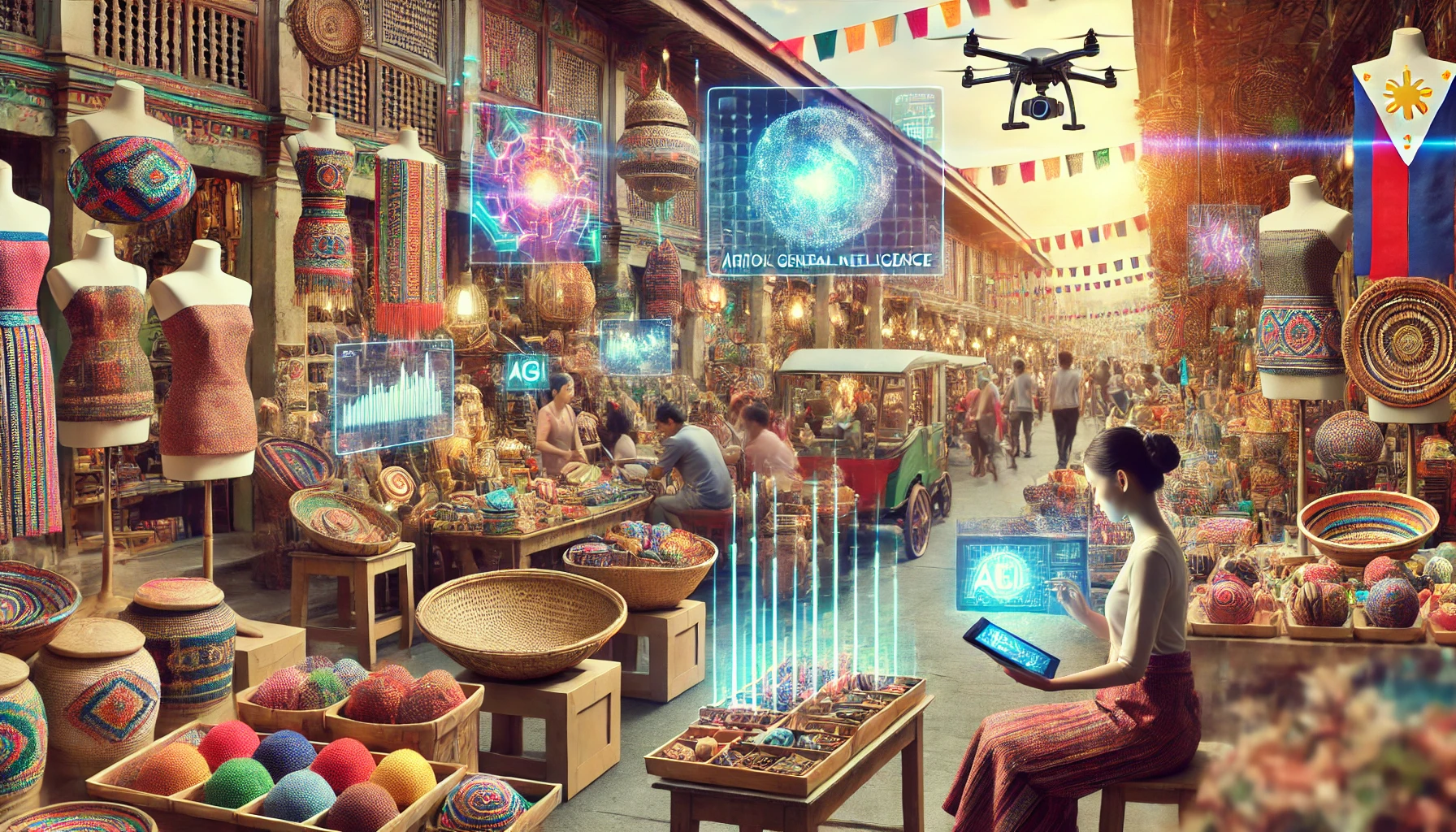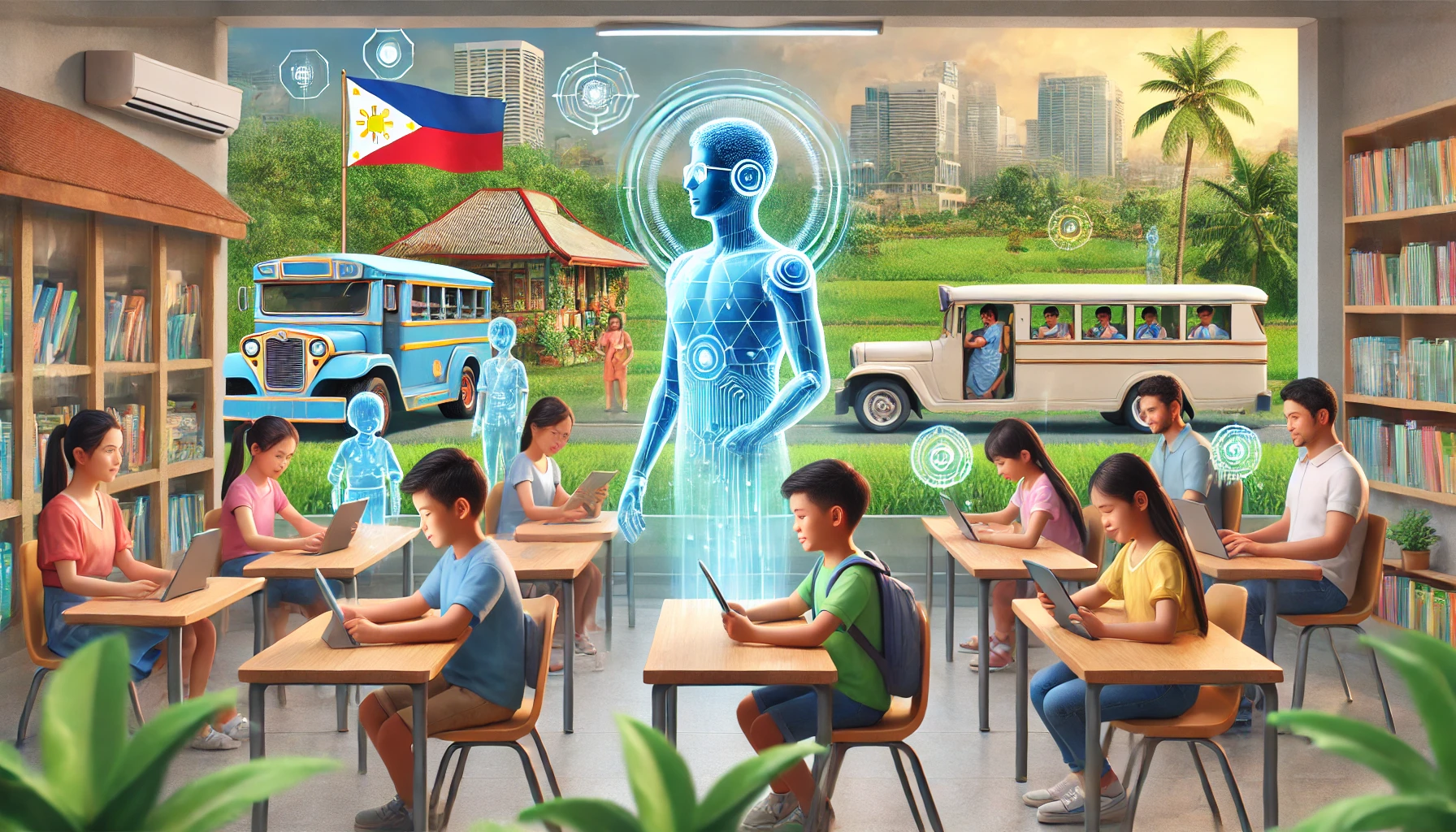The Philippines, renowned for its rich cultural heritage and artistry, boasts a diverse range of handicrafts and local goods. From intricate banig mats and barong tagalog embroidery to artisanal jewelry and hand-carved wooden furniture, these products not only reflect Filipino creativity but also serve as vital economic drivers. However, with global markets becoming increasingly competitive, integrating cutting-edge technology like Artificial General Intelligence (AGI) can open unprecedented opportunities for the local handicrafts and goods industry.
What is Artificial General Intelligence (AGI)?
AGI refers to advanced AI systems capable of performing a wide variety of tasks at human-like intelligence levels. Unlike narrow AI, which is specialized for specific tasks, AGI can learn, adapt, and make decisions across diverse domains. This transformative technology can help artisans and producers scale operations, innovate designs, and reach wider audiences.
Opportunities for Handicrafts and Local Goods
1. Product Design and Innovation
AGI can analyze global design trends, cultural aesthetics, and consumer preferences to suggest innovative designs that resonate with contemporary markets while preserving traditional elements. For example:
- Weaving Patterns: AGI could generate unique, culturally-inspired weaving patterns that blend traditional and modern styles.
- Prototyping: Virtual simulations of new designs can save time and reduce material waste.
2. Optimizing Production Processes
While many handicrafts rely on manual craftsmanship, AGI can streamline complementary processes such as:
- Material Sourcing: Suggesting sustainable and cost-effective materials based on global supply chain data.
- Process Automation: Automating repetitive tasks like cutting, assembling, or packaging while maintaining the handmade essence of the product.
3. Enhanced Marketing Strategies
AGI’s ability to analyze large datasets can revolutionize marketing by:
- Identifying Target Markets: Pinpointing specific customer demographics in global markets based on purchasing behavior and cultural appreciation for handicrafts.
- Personalized Campaigns: Creating tailored marketing strategies, including visuals, storytelling, and advertisements, to connect emotionally with diverse audiences.
- SEO Optimization: Optimizing online content for visibility in e-commerce platforms like Etsy, Amazon Handmade, and even local marketplaces.
4. Boosting E-commerce Presence
With AGI, artisans and small businesses can overcome the challenges of e-commerce. For instance:
- Virtual Shops: Designing immersive 3D or virtual reality experiences that allow customers to explore products online as if in a real store.
- Dynamic Pricing Models: Adjusting prices in real-time based on demand, competition, and production costs.
- Logistics Management: Streamlining shipping, inventory, and order tracking to improve customer satisfaction.
5. Empowering Artisan Communities
AGI can empower artisan communities by:
- Skill Development: Creating personalized learning modules for artisans to enhance their skills or learn new techniques.
- Collaborative Networks: Connecting artisans with designers, buyers, and suppliers worldwide through intelligent matchmaking platforms.
- Language Translation: Breaking language barriers, enabling artisans to communicate with global clients.
Challenges and Ethical Considerations
While the integration of AGI offers immense potential, it also poses challenges:
- Accessibility and Cost: Ensuring that small-scale artisans can afford AGI solutions.
- Preservation of Authenticity: Balancing technological intervention with the preservation of traditional craftsmanship.
- Data Privacy: Protecting artisans’ intellectual property and cultural heritage.
- Training and Support: Providing necessary education and tools to help artisans utilize AGI effectively.
Conclusion
The synergy between the Philippines’ vibrant handicrafts industry and AGI has the potential to unlock significant growth opportunities. By embracing AGI, artisans and local businesses can innovate, reach global markets, and preserve Filipino heritage in new and exciting ways. To fully realize this vision, stakeholders—including the government, tech companies, and artisan communities—must collaborate to ensure inclusive, ethical, and sustainable implementation of this transformative technology.
The future of Filipino handicrafts is not just in preserving the past but in blending tradition with innovation to create a thriving global presence. AGI might just be the bridge to that future.
[SEO optimized]


